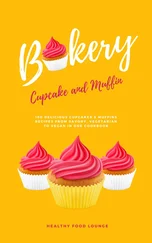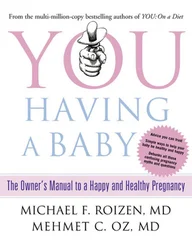But it may not be easy during pregnancy to change your eating habits. Pregnancy is a very busy time for many women – working, looking after a home and family and fitting in clinic appointments. At the same time, you may not be feeling well – you may have pregnancy sickness or tiredness, and you may feel uncomfortably full and big. You may worry about putting on too much weight – or about not putting on enough. Many women are concerned about food safety – there seem to be so many rules and warnings about paté and eggs and soft cheeses. Sometimes it just seems easier to open another packet of chocolate biscuits! And so we decided to write this book.
The information in this book is based on sound scientific research. If the findings of the research are unclear, we say so. We offer you clear and unbiased information – but we do not make decisions for you. Each woman reading this will have unique needs and priorities, and you alone can make the decisions that suit your life. Only when risks are clear-cut do we firmly state a recommended course of action.
Whether you are planning to get pregnant, are newly pregnant or due to have your baby next month, we hope that this book will guide you, ease some of your anxieties – and support you when making food decisions during pregnancy. Above all, we hope this book will help make eating fun.
Hannah Hulme Hunter
Rosemary Dodds
September 1998
1 What is ‘healthy eating’?
Healthy eating is about choosing a balance of food, and feeling your best physically and mentally. Healthy eating is about real food – and enjoying eating.
In this chapter we describe the main food groups, explain why they are important and talk about the part that each group plays in a healthy and balanced diet.
Getting the balance right
Imagine an empty plate. Mentally divide the plate into three.
One-third will be full of energy foods: the starchy carbohydrates – pasta, potatoes, rice, yam, bread or cereals. Another third will be packed with fruit and vegetables. Divide the remaining third of the plate into three unequal sections, one a lot smaller than the other two. One of these sections is for protein foods, needed for growth and repair of our bodies – meat, fish, nuts, cooked beans and so on. The other section is for dairy products: the milk-based foods, rich in calcium and other minerals – fresh milk, yoghurt, cheese. The tiny bit in the middle is for fatty and sugary foods.
Now put some food onto your plate. Fill one whole third with rice, potatoes or pasta. Pack another third with lightly cooked vegetables. Put a small portion of fish or lean meat in one of the remaining bigger bits. In the other, put a tub of plain yoghurt. In the tiny bit in the middle, put a teaspoonful of honey to mix into the yoghurt. Pour yourself a glass or two of water. There – a balanced meal!
What about breakfast? Fill one-third of your plate with tinned grapefruit segments. Fill the next third with 2–3 slices of wholemeal toast. If you want to (and it doesn’t matter if you don’t for one meal), add an egg or a slice of lean ham. Place a glass of semi-skimmed milk in one of the smaller sections, and a pat of butter for the toast in the tiny one in the middle. Another balanced meal.
A quick working lunch? Fill one-third of your plate with a large roll of wholemeal bread. Pack the next third with some well-washed salad leaves, a sliced tomato and a crisp, green apple. In the small protein section put a hard-boiled egg or some slices of tasty Cheddar. (Don’t worry about the milk section; the cheese has taken care of that one this time.) Spread the bread roll with a small knob of low-fat spread, and wash down your meal with a carton of unsweetened orange juice.
Some women find it more helpful to imagine the plate filled with food for the whole day – or even for several days. So long as we get the balance right over about a week, that’s OK. This means that the bag of crisps we couldn’t resist in the cinema can fill up the tiny fatty foods section for several days – provided we don’t try to squeeze in extra dollops of cream as well! And the second helping of roast lamb enjoyed at the weekend can take care of our protein needs for a while, too.
But beware: many foods overlap the sections on the plate and need to be counted into both. Streaky bacon, for example, and ham with the fat still attached, will fill the small protein section – and overlap into the tiny fat section. (So no extra butter or spread for that meal.) Likewise, breakfast cereals are an excellent way of filling the carbohydrate section, but if they contain added sugar, that’s the sugar section overflowing as well. This is why it’s a good idea to choose low-fat and low-sugar foods – and leave the fat and sugar section free for the odd sweet or bag of crisps or whatever other treats we fancy.
Food choices from across the world
Wherever you come from, and whatever the origins of your choice of food, you can use these guidelines for a balanced diet. Simply decide in which group the foods you enjoy belong, and plan your meals around the same proportions described above.
In fact, we can all learn a lot about balanced eating from the food of other countries. Most Indian meals are based on plenty of rice or chapati, a vegetable curry and occasional fish or eggs. Traditional Italian meals generally involve lots of pasta, tasty tomato or milk-based sauces and perhaps a small quantity of meat. Much Chinese cooking centres on stir-fries of noodles, lightly cooked vegetables and seafood. Many traditional African meals involve plenty of starchy carbohydrate – yam, maybe, or pounded cassava – a spicy stew and green leafy vegetables.
Just one word of caution: if you also enjoy fatty foods such as chips, pies and crisps, keep a close eye on the total amount of fat in your diet.
Now let’s look more closely at the foods in each section of our plate.
A nutrient is any substance that gives us nourishment and contributes to the smooth working of our bodies.
A third of our plate is packed with starchy carbohydrate foods. Carbohydrates should be the main food group that give us energy (calories). We all need energy foods, simply to keep our bodies working well. Some of us need more energy than others; a farmer, active all day in the open air, will need more energy than a secretary sitting at a desk. But even sitting and thinking uses up energy!
Caring for young children and running a home is particularly demanding work. An adequate intake of energy foods is very important, not only to give us the strength to keep going but to help us feel enthusiastic and happy doing so. During late pregnancy you need slightly more energy than at other times – but not much! It is certainly not true that you need to ‘eat for two’. We talk more about this in Chapter 5.
There are two types of carbohydrates – starches and sugars.
Starchy foods include things like breakfast cereals, bread, chapati, nan, pitta, rice, pasta, noodles, potatoes, yam and plantain. These foods tend to be good and filling. The energy from starchy foods is slowly converted into sugars and gradually absorbed by our bodies. This means we feel satisfied for longer.
Starchy carbohydrate foods give us more than just energy. They are also important sources of other valuable nutrients – protein, vitamins, minerals and fibre. Starchy carbohydrate foods tend to be fairly cheap to buy.
Читать дальше












